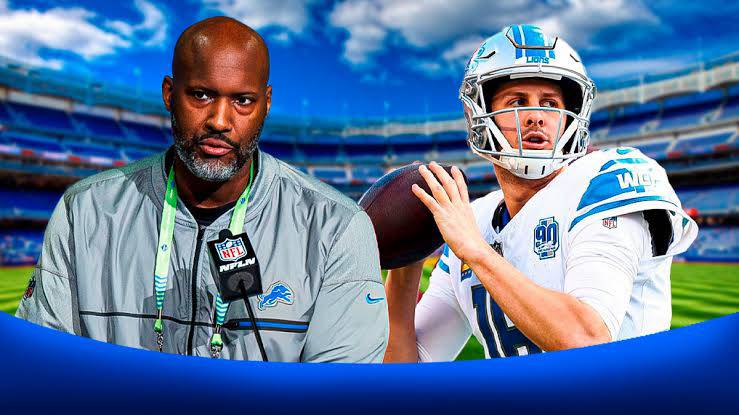In a groundbreaking move that’s being hailed as both long overdue and deeply transformative, the Dallas Cowboys Cheerleaders have received what’s being described as a “life-changing” raise — a development that has sent waves throughout the world of professional cheerleading and sparked national conversation about fair compensation, gender equity, and the evolving landscape of professional sports entertainment. For an iconic group long regarded as the gold standard of NFL cheer squads, the financial bump is more than just a pay increase — it is a powerful acknowledgment of their contributions, professionalism, and cultural influence.
The Dallas Cowboys Cheerleaders, who have dazzled fans since their inception in 1972, are among the most recognized and celebrated cheer squads in the world. Known for their high-level choreography, athleticism, and strict performance standards, these women have often worked tirelessly with minimal financial reward, despite their central role in the game-day experience and the broader Cowboys brand. That tide has now turned in historic fashion.
Sources close to the organization confirmed that the new agreement will significantly boost both game-day and annual compensation for the cheerleaders. Where members of the team once earned as little as $15 per hour and around $400 per game — pay that many critics deemed unacceptable given the demands, visibility, and prestige of the position — the cheerleaders will now earn figures that reflect their elite status and the immense value they provide to the organization.
The change reportedly came in the wake of a soon-to-be-released Netflix documentary titled America’s Sweethearts: Dallas Cowboys Cheerleaders, which dives deep into the experiences of the women behind the pom-poms. The series sheds light on the grueling audition process, demanding practice schedules, strict code of conduct, and the emotional and physical challenges that come with wearing the uniform. Public outcry over the pay discrepancy quickly followed early previews of the docuseries, prompting swift action by team ownership to rectify the situation.
Team owner Jerry Jones, long known for his commitment to brand excellence, moved quickly to quell the criticism and to support the women who’ve helped define the Cowboys’ global identity. In an internal meeting with cheerleading leadership, Jones reportedly acknowledged that while the cheerleaders had long been an integral part of the Cowboys family, their compensation had not reflected that reality. The raise was positioned as both a financial correction and a moral imperative — a move to align the Cowboys’ operations with 21st-century values.
The raise has been described as “life-changing” by multiple members of the cheer squad, many of whom had previously juggled full-time jobs or side gigs just to support their passion for performing. The new salary structure allows these women to treat cheerleading as a viable career path, not just a part-time passion project. It will also open doors for greater access to healthcare benefits, travel stipends, and potentially even retirement planning — benefits historically reserved for players and front-office personnel.
For decades, professional cheerleaders across the NFL have pushed for better treatment, more respect, and fair compensation. While some teams have made quiet progress in recent years — often under pressure from lawsuits or media scrutiny — the Cowboys’ move is one of the most public and sweeping reforms to date. Given the team’s influence, it could set a new standard across the league.
The NFL has long profited from the visual spectacle of game day, and cheerleaders have been a significant part of that appeal. From community outreach to branding campaigns and halftime shows, their responsibilities extend far beyond the sidelines. Yet until now, the cheerleaders’ financial compensation had not matched their cultural and commercial value.
Former Dallas Cowboys cheerleaders have also weighed in on the development, many expressing pride and satisfaction that the new generation is being recognized in ways that earlier squads never were. Some have recalled the financial strain of maintaining appearances, travel, and uniform upkeep — often at their own expense — all while working multiple jobs and attending mandatory team events.
The raise also marks a symbolic victory for women in sports, as the industry continues to wrestle with inequities in pay, visibility, and opportunity. In recent years, women’s sports — from the WNBA to women’s soccer — have demanded and, in some cases, achieved incremental gains in fairness and compensation. The Cowboys’ cheerleader raise fits into that larger narrative, showing that visibility, public pressure, and media transparency can result in meaningful change.
This move may also serve to inspire similar efforts in other NFL organizations, many of which have faced similar scrutiny over cheerleader compensation. Some teams have even disbanded their cheerleading squads altogether in recent years to avoid dealing with the demands for reform — a move widely criticized as regressive. The Cowboys, in contrast, are choosing to lead with investment and empowerment, rather than retreat.
Cheerleaders in the NFL are not protected under the players’ collective bargaining agreement, which means they often lack the legal protections and negotiating leverage of the athletes they support on the field. That dynamic has made it easier for teams to underpay them for decades. However, the rise of NIL (Name, Image, and Likeness) opportunities, social media influence, and greater media exposure have helped cheerleaders gain visibility as both performers and public figures, shifting the power dynamic ever so slightly.
This latest raise from the Cowboys may well act as a catalyst for further organizing efforts among cheerleaders league-wide. Already, early reports suggest that cheer squads from other high-profile teams are beginning to re-evaluate their own compensation packages. What was once a whisper in backrooms is quickly turning into a movement. The visibility of this decision — amplified by the Netflix documentary — ensures that other organizations will be held accountable in the court of public opinion if they fail to follow suit.



